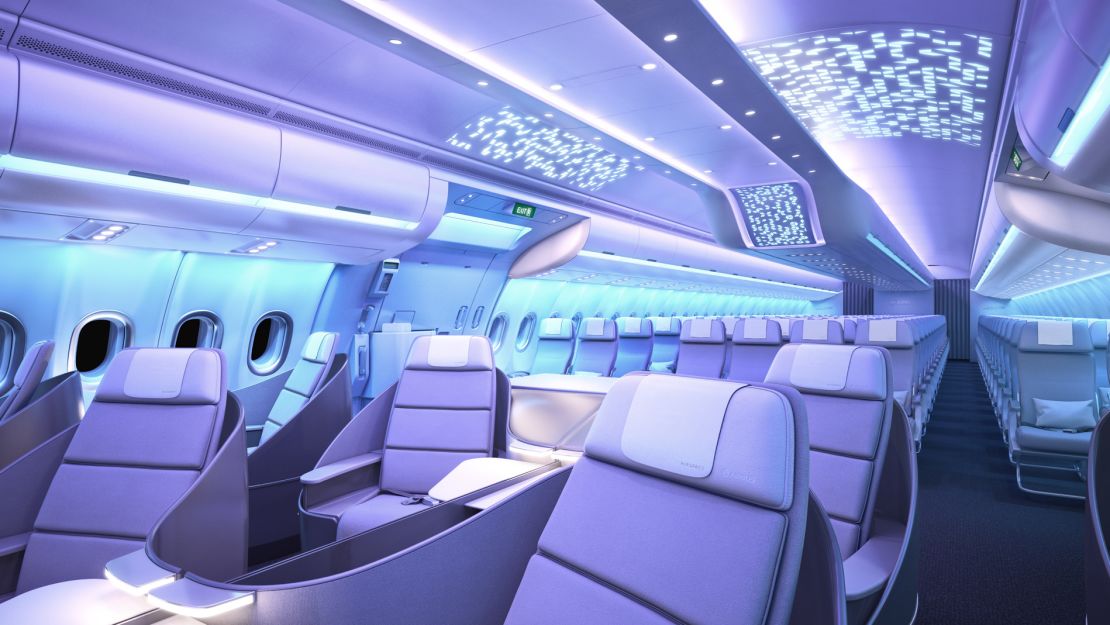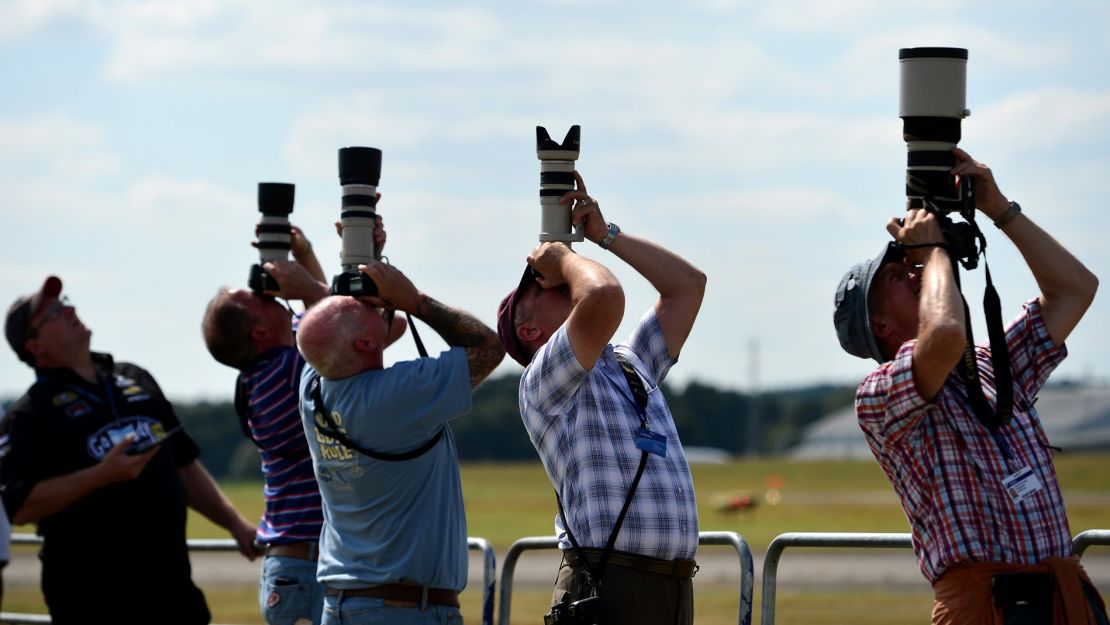Editor’s Note: Future of Aviation explores the next leaps forward in the world of air travel, from jet technology to passenger experiences. Read CNN’s sponsorship policy
The future of some of the biggest names in aviation, the dramatic rise of drones, the emergence of new plane makers and barnstorming displays of military and civilian hardware.
If there is a must-go global aviation event, this is it.
While Britain is still reeling from the shockwaves caused by the recent Brexit referendum, the planet’s aeronautical industry is getting ready to descend, like every other year, upon the small town of Farnborough, some 40 miles southwest of London.
For a few days in the summer, Farnborough becomes the world’s aviation capital.
It’s an honor the English aerodrome shares, on alternate years, with its French equivalent at Le Bourget.
Aircraft manufacturers come to announce big orders while a constellation of firms, covering every single aspect of the aviation industry’s value chain, showcase their latest technologies.
The last edition of the show saw an estimated $200 billion-plus worth of business deals signed, of which some $152 billion were new aircraft orders.
MORE: Floating airports: Could they finally become a reality?
State-of-the-art fighters
The show runs for a whole week, from July 11 to 17, with the first five days devoted exclusively to the corporate crowd. It’s open to the general public at the weekend.
Amanda Stainer, commercial director at organizer Farnborough International, says the show has a global scope with 22 national pavilions, four more than in the previous edition.
“Over 70% of participants come from overseas, and this year we expect 30% of them to be first-timers,” she says.
Visitors will be able to see 99 different aircraft types.
These range from the state-of-the-art F-35 fighter jet, which has the dubious honor of being the most expensive military aircraft program ever, to still-airworthy WWI-era vintage aircraft.
Witnessing the acrobatic displays and sheer power of fighter jets roaring over the English countryside is worth the hour-long ride from central London.
But this year, most of the interest is expected to be focused on the civilian side of the show.
According to Stainer, while military aviation involvement remains stable, figures are significantly up when it comes to commercial aviation participants.
MORE: How real is the hypersonic aircraft revolution?
Amazing manoeuvers

The two aircraft manufacturing giants, Airbus and Boeing, will inevitably have a very notable presence at the show.
The European aircraft-maker will have at least two of its long-haul wide-body airliners at the show, an A350 XWB and an A380.
The A350 is Airbus’s most modern airliner and is steadily building up its global presence, entering service with numerous airlines this year.
Industry interest in the A380 currently pivots on Airbus’s decision about the launch of a re-engined Neo version, that could help it break a current sales impasse.
New version or not, the world’s largest airliner remains an impressive sight at any airshow. Despite its size, the A380 is capable of pulling off amazing maneuvers during air displays.
In addition to all that metal, visitors to the Airbus pavilion will be able to admire a mock-up of the new Airspace by Airbus cabin concept, that incorporates some of the latest advances in terms of passenger comfort.
Also of note is a virtual reality experience that’ll place visitors at the command of a simulated A350 airliner, an A400M military transport or will even let them experience a virtual walk on the surface of Mars.
Heavyweights and challengers
As it turns out, Boeing’s 100th anniversary will take place during the show, on July 15 – a perfect opportunity to celebrate the rich heritage of the American manufacturer.
MORE: 5 tech leaps that’ll change aviation for good
A dedicated pavilion, the Boeing Centennial Experience, will mark the occasion, offering visitors a chance to explore the history of the company and its technological achievements.
Interesting as Boeing’s past may be, industry observers will be keen to get a glimpse of the future too, as the Boeing 737 MAX, the revamped version of Boeing’s best-selling aircraft ever, is expected to make its international public debut.
Addison Schonland, aviation consultant and founder of Airinsight, says Boeing might, at last, disclose information on its vision for a potential replacement for its aging 757 model.
“Boeing is very good at this – it releases some ideas it is working on,” Schonland says. “Such news often freezes the market segment as airlines and lessors decide to hold back while they seek clarifications and details.”
Boeing and Airbus face competition in the single-aisle midsized segment from Bombardier’s C Series as well as from Chinese and Russian brand-new designs, the C919 and MC-21 respectively.
Of these, only the C Series is currently flying and will be at the show, just days ahead of its regular commercial debut with Swiss.
Nevertheless, China is sending its largest ever delegation to Farnborough.
Yet to be confirmed, Embraer’s newest products may make their first public international appearance all the way from Brazil.
These could include an E190-E2, an update of the firm’s successful E-Jet family, as well as one of the prototypes of its new military transport and tanker, the KC-390.
MORE: Electric-powered plane that can take off anywhere
The connected aircraft

Air displays, new aircraft model presentations and big orders usually capture the attention of the media and public alike. However there’s plenty going on in other, less flashy, fields.
Aircraft manufacturing equipment, electronic systems and MRO (maintenance, repair and overhaul) are areas of the show that’ve witnessed the largest increase in participant numbers.
A particularly promising aspect of the industry is that of e-enabled aircraft, lying at the crossroads of two deeper technological trends, big data and the “Internet of things.”
Schonland says the aerospace industry must get ready to cope with huge amounts of data, streaming from the many “smart components” that’ll be fitted in next-generation aircraft.
“This will be massive,” he adds. “To give you some context, a single engine could be generating petabytes of data every year.”
Real-time aircraft tracking is also high up on the agenda after a string of airliner disappearances over the sea. The quest is on for some sort of system that is able to improve what so-called black box flight recorders do now.
“At this Farnborough airshow new technologies will be presented – including how to harness the power of data, for example in engine maintenance – says Andy Foster, senior lecturer at the Centre for Air Transport Management at Cranfield University, in the UK.
“There are also proposals to expand real-time data monitoring to the whole aircraft not just for tracking purposes but for predicting when components need to be repaired or replaced.”
MORE: NASA says it will build a quieter supersonic passenger jet
Game of drones
In line with the growing importance of pilotless aircraft, this year Farnborough will host the very first edition of its UK Drone Show.
For the first time, drones are going to have their own dedicated space at the show.
There’ll be drone-related activities on the public days, including a drone air display and the UK Drone Racing Masters Championship.
As more and more drones start populating our skies, guaranteeing safety becomes paramount, this is the reason the event will be focusing also on safety issues.
Participants will be able to get firsthand insights from major players in this field, such as Amazon Prime Air and the CAA (the UK’s civilian aviation authority).
This is a segment of the aviation industry that can only be expected to become more prominent and, while Farnborough is a pioneer, it’s likely to become a feature of any airshow of the future.
Miquel Ros is an aviation blogger and consultant. An economist by background, he’s worked for Flightglobal and Bloomberg. He currently covers the airline industry through Allplane.tv.









